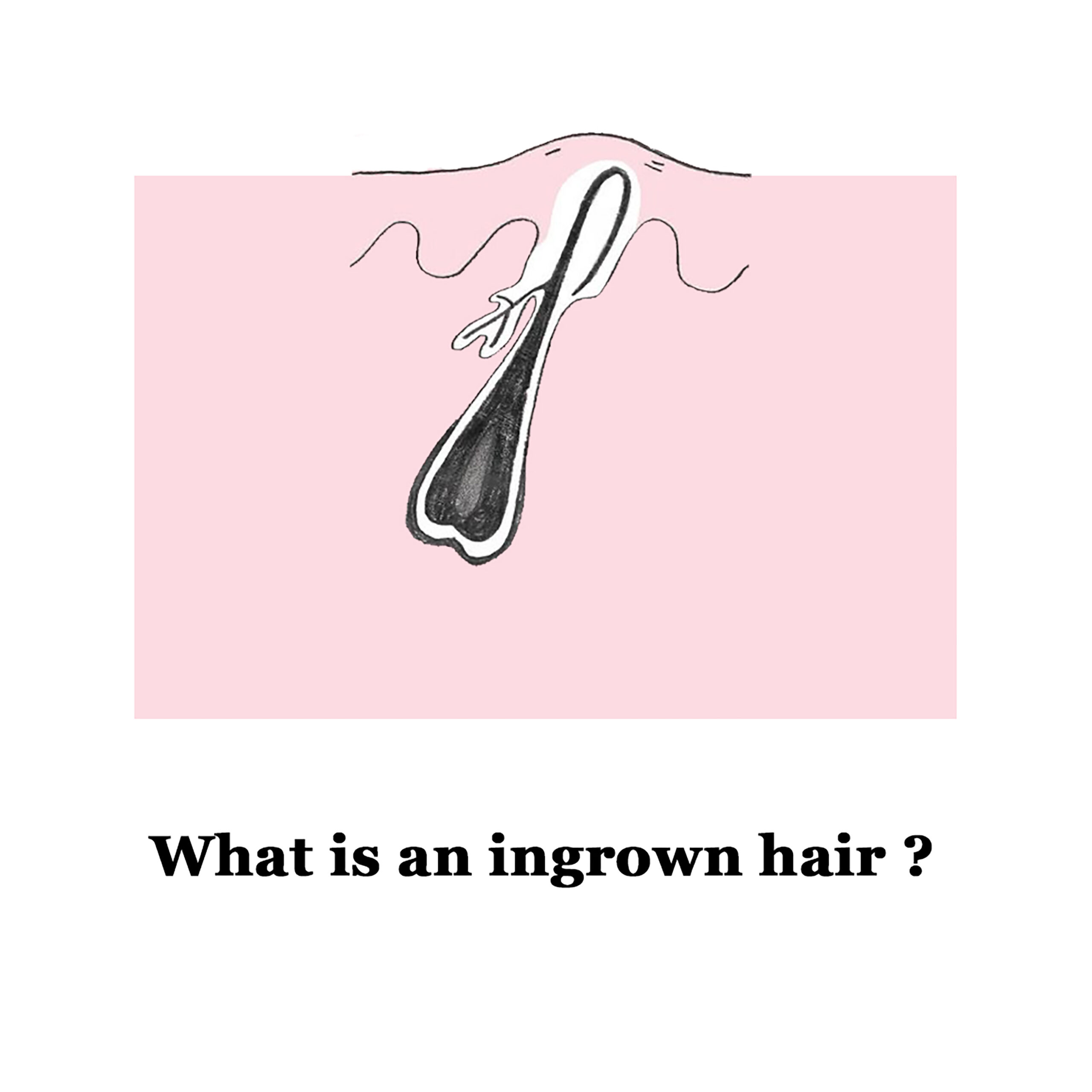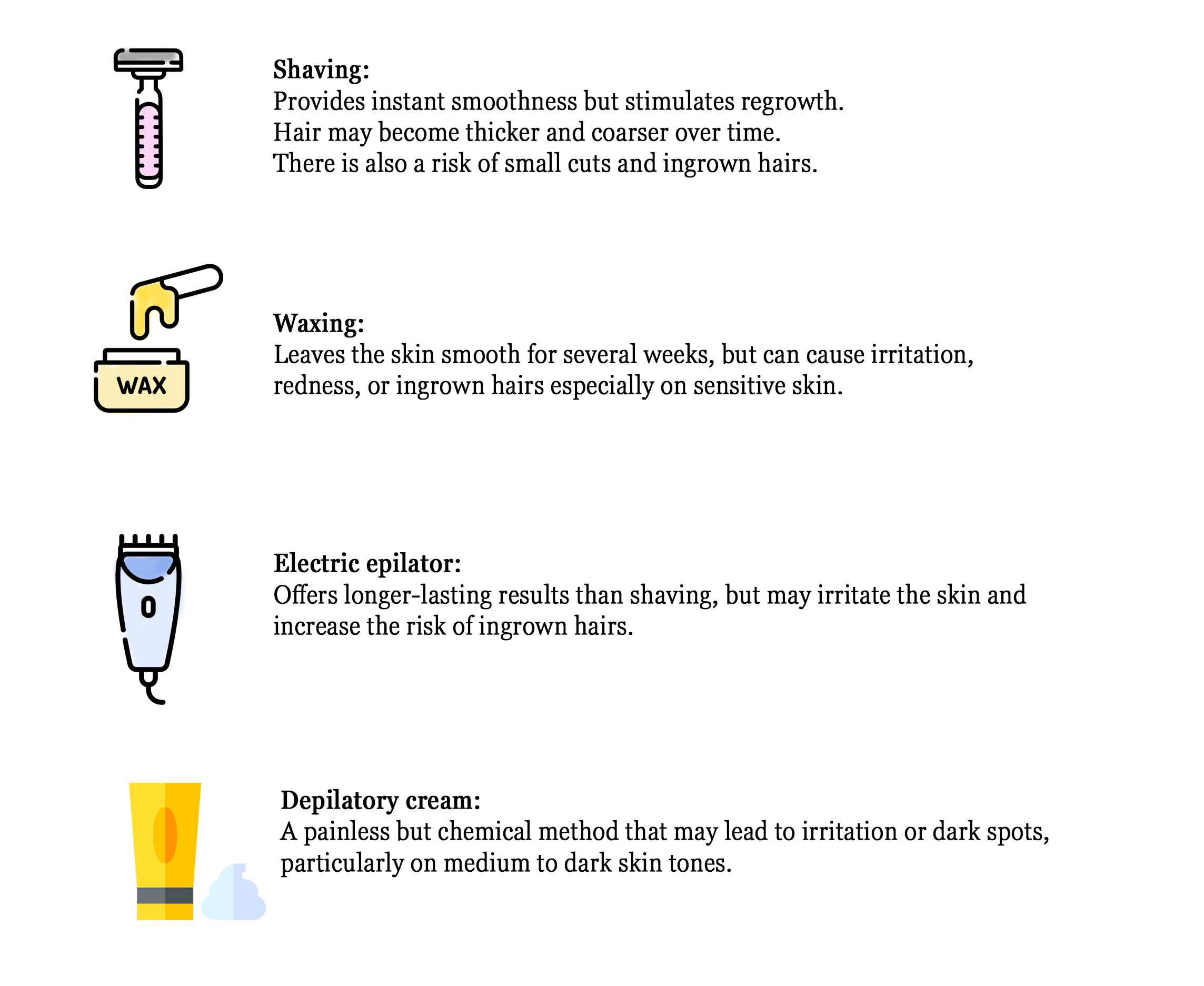
An ingrown hair is a hair that grows under the skin.
It occurs when the hair grows in the wrong direction, deviating from its usual path and failing to penetrate the dermis barrier.
Ingrown hairs can appear all over the body, but usually on the legs, bikini line, face and neck. These are the areas most subject to shaving or waxing, or to friction with clothing, which thickens the skin.
The ingrown hair then causes a small inflammation that results in the appearance of a small, solid blister on the surface of the skin, often painful, red and itchy.
If not treated in time, it can take the form of a cyst (a small infection or purulent blister).
Causes :
- Hair quality :
Hair type can be a cause of ingrown hairs :
Curly hairs have a tendency to twist under the skin and grow inwards. Fine hairs are also at risk, as they need a certain rigidity to pierce the skin.
- Skin type :
With thick skin, the epidermis closes up and the hairs have difficulty breaking through to emerge. By ”thick skin”, we mean skin with a thick corneal layer, not dense or toned skin.
Because of their coloring, black and mixed-race skins have a thicker corneal layer, and are therefore more affected by ingrown hairs than fair skins.
Very dry skin is also susceptible to this problem, as scales tend to block the orifice.
Epidermal friction. When the epidermis is subjected to friction, particularly when wearing tight clothing, the skin thickens or dries out. This can make it difficult for the hair to penetrate the epidermis, causing it to grow inwards.
Hair removal techniques :
Which hair removal method should you choose to limit or eliminate ingrown hairs ?
“All hair-pulling techniques encourage ingrown hairs”
In fact, every time a hair is plucked, a new, young hair will grow: when waxing, epilating or tweezing is used, the skin has had time to fill in, and the new hair no longer has a defined trajectory to follow in the direction of growth, so it can re-enter the skin.
What about shaving ?
Many women opt for the razor for its speed and convenience, but this method of hair removal also comes with its share of risks: cuts, pimples, infection and ingrown hairs.

Permanent laser hair removal :
Laser remains the best way to get rid of your hair for good, and to put an end to ingrown hairs.
From the very first sessions, the risk of ingrown hairs is reduced. With each session, 20% of hair follicles are destroyed, ingrown hairs are also reduced, and skin texture is refined.
At Be Esthetic, we specialize in permanent hair removal for black and mixed-race women.
Care and gestures to avoid ingrown hairs :
Whatever hair removal method you use, and even during laser sessions, we recommend :
- The first step is to disinfect your skin before waxing.
- Exfoliate your skin regularly, using gentle scrubs with fruit acids. Enzymatic exfoliation is relatively unknown to cosmetics consumers. It’s an exfoliating treatment that doesn’t contain grains, but fruit acids (the famous AHAs) that gently remove dead skin cells.
- At Be Esthetic, we prepare the skin with a glycolic acid-based Foamer before any laser treatment.
- Moisturize, Moisturize at least 1-2 times a day. Especially after exfoliating scrubs and hair removal, whatever the method used.
- Finally, for people with many problems of this kind, laser hair removal may be the best solution : from the very first sessions, the risk of ingrown hairs is reduced.
(Note that this technique doesn’t work on everyone: it doesn’t work on blond, white or red hair. )
See you soon
Hélène
